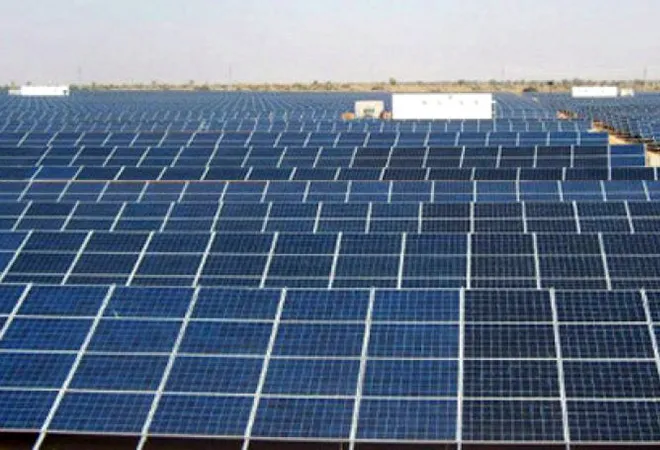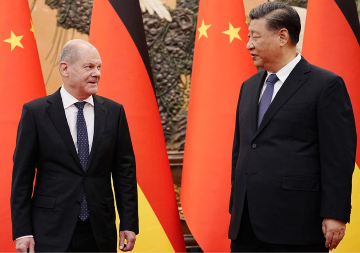
The decision by newly-elected US President Biden to
cancel the Keystone XL pipeline was still a shock when it was finally announced. An election promise for months, it is now finally reality. As sure as the US is our next-door neighbour, so too we face a familiar problem—how to get Canadian oil to the world market. The US administration’s focus on environment and climate change is unlikely to mellow down or deviate over the next four years. It is, therefore, time Canada shifts its focus from our largest trading partner to partnering with the largest democracy.
Canada has the
third-largest reserves of uranium and oil in the world. India is the world’s
third-largest energy consumer, and its need for energy continues to climb. The International Energy Agency (IEA) in its latest outlook for India states that it
will account for a quarter of global energy demand by 2040, and will overtake the European Union as the world’s third-biggest energy consumer by 2030. This growth in demand will consist mainly of fossil fuels with India's reliance on overseas oil increasing to 92 per cent by 2040. India is well aware of the need for increased energy sources and the impact of climate change. That is why India is building infrastructure to boost use of liquified natural gas (LNG) and is aiming to generate more than half of its electricity consumption using solar energy.
India is on the hunt for strong, stable, energy supplies while Canada needs a reliable consumer. Whether oil or uranium, or both, India has plenty of hunger for energy. The world’s two largest democracies have what the other needs. Despite being a fellow democracy with shared characteristics, it is not our top market. Why?
Canada and India started cooperating on energy, especially nuclear, soon after the end of the Second World War. India bought the CANDU reactor from Canada and started building nuclear reactors to generate electricity. Facing two hostile nuclear weapons-armed neighbours, India used plutonium produced in the Canadian reactor for a
nuclear test in 1974. The Canadian foreign establishment is still
sore about it, even though the agreement
did not forbid the nuclear test that India carried out. Nuclear cooperation picked up only after a
bilateral agreement in 2013.
Canada and India started cooperating on energy, especially nuclear, soon after the end of the Second World War. India bought the CANDU reactor from Canada and started building nuclear reactors to generate electricity. Facing two hostile nuclear weapons-armed neighbours, India used plutonium produced in the Canadian reactor for a nuclear test in 1974. The Canadian foreign establishment is still sore about it, even though the agreement did not forbid the nuclear test that India carried out. Nuclear cooperation picked up only after a bilateral agreement in 2013.
Coal and petroleum supply nearly three-quarters of India’s total energy consumption, with the rest supplied by
traditional biomass and waste. With 300 million Indians living
without access to power and energy consumption
projected to double over the long term, the transformative impacts are huge. Indian Prime Minister Modi has committed to continue “
efforts to fight climate change” even though India with 18 percent of the world’s population uses only
6 percent of the world’s primary energy.
Two key drivers of India’s energy map are an acceleration to “
move towards a gas-based economy” and a push for cleaner use of fossil fuels. Simply put, India presents a clear and continuing opportunity for Canada when it comes to energy—an immediate friend, and a long-term partner.
As a uranium producer and exporter, Canada has much to gain by exporting to India. India has demonstrated responsibility and maturity given its geo-political situation and security concerns when it comes to nuclear power. With a huge swath of the rural population to be connected to the electricity grid, India represents a huge market for
Small Modular Reactors (SMRs), an area where Ontario, New Brunswick, Saskatchewan, and Alberta are collaborating.
India is going to take decades to transition to green energy. Canada can easily step in and provide the crude oil and natural gas that it is going to need until then. With nearly half of India’s energy consumption coming from coal, there is a strong environmental case to be made for India and the world. India is already a leader in solar energy generation and has focused on renewables, another area for collaboration.
Canada exports only
0.2 percent of its oil to India. Alberta—home to Canada’s oil patch—is not sitting idle. Since 2018, Alberta Premier Jason Kenney has been pushing for the Canada-India oil trade. Alberta’s Canadian Energy Centre
noted that India will import two million barrels per month from Canada to replace supplies from Venezuela. India
plans to increase the share of natural gas in its total energy mix from the current six percent to 15 percent by 2030. As the world’s fifth-largest producer of natural gas, Canada cannot afford to ignore this key market.
Note that the Climate Action Tracker
rates India as a “global leader” on climate change, while Canada’s climate commitments are rated as “insufficient”. India is the
founder of the International Solar Alliance (ISA), which aims to mobilise investments of US $1 trillion by 2030. Canada
aims for clean technology to be one of Canada’s top five exporting industries, with CAD 20 billion annually in exports by 2025. All those exports have to go somewhere! India is a large enough market that can absorb virtually all of Canada’s exports.
An aggressive energy pact with India will create new jobs in Canada and secure markets for Canadian resources for decades. It will show that Canada stands up for democracy, and that democracy and markets can and do go hand-in-hand. If Canada and the US can be great trade partners, there is no reasonable excuse for why a similar relationship cannot exist between Canada and India.
An aggressive energy pact with India will create new jobs in Canada and secure markets for Canadian resources for decades. It will show that Canada stands up for democracy, and that democracy and markets can and do go hand-in-hand. If Canada and the US can be great trade partners, there is no reasonable excuse for why a similar relationship cannot exist between Canada and India.
The oil and natural gas sector directly and indirectly
supported over half a million jobs across Canada (2017). Supporting the creation or continuation of more than 500,000 jobs for decades to come is going to have strong ripple effects even electorally. In fact, it could help current Prime Minister Justin Trudeau win votes in ridings that have not been traditionally Liberal, and also in the broader Indo-Canadian community. Sounds glib, but in the end, everyone wins—the environment, Canada, India, the market, and democracy.
Coming back to where we began, US President Biden is clear about what he intends to do over the next four years. We can continue waiting and hoping that the US grants permission to the pipeline, or we can start working on building a relationship with a reliable trading partner and market.
An abridged version of the above was published in the Financial Post
The views expressed above belong to the author(s). ORF research and analyses now available on Telegram! Click here to access our curated content — blogs, longforms and interviews.



 The decision by newly-elected US President Biden to
The decision by newly-elected US President Biden to  PREV
PREV


